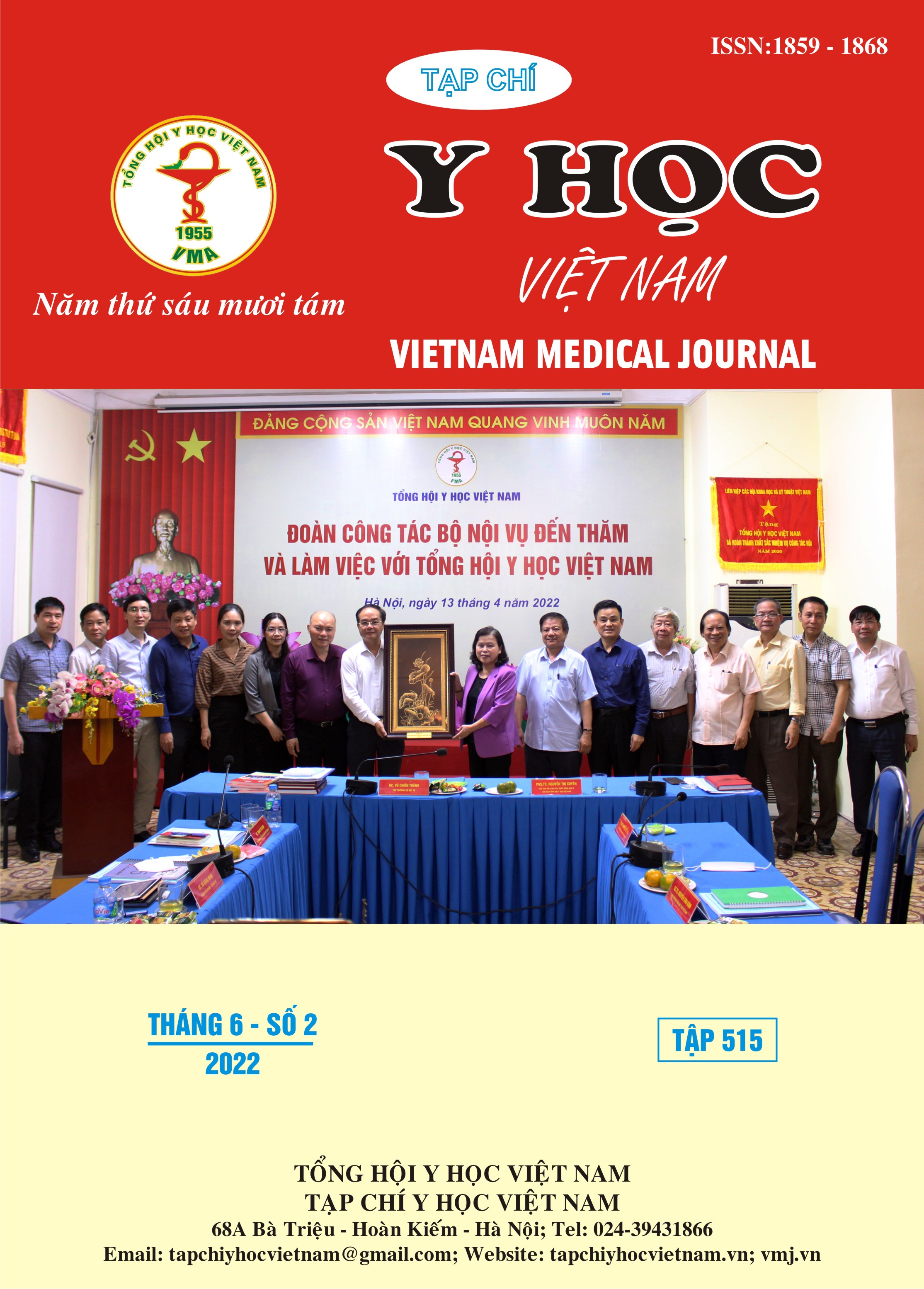THE INTRAOPERATIVE HEMODYNAMIC PARAMETERS IN THE GOAL-DIRECTED FLUID THERAPY IN MAJOR ABDOMINAL SURGERIES UNDER GUIDANCE OF ESCCO
Main Article Content
Abstract
Major gastrointestinal surgery accounts for a high percentage of all types of surgery. There are many hemodynamic changes perioperative due to fluid loss and changes in circulating volume. A randomized, controlled study was conducted at the Department of Anesthesiology - Hanoi Medical University Hospital from January to October 2021 on 70 patients with hemodynamic monitoring using an esCCO monitor to investigate changes in blood pressure, change some hemodynamic parameters in surgery. Results: The rate of intraoperative hypotension occurred in 80% of patients. After fluid challenge, no inotropes were required, but an average of 6mg of ephedrine was needed to treat intraoperative hypotension. esCCI and esSVI parameters decreased after induction of anesthesia and increased towards the end of surgery. Conclusions: In major gastrointestinal surgery hemodynamics is variable in many patients, but can be restored stably according to the guidelines of goal-directed fluid therapy under the guidance of esCCO.
Article Details
Keywords
Major abdominal surgery, hemodynamic change, esCCO
References
2. John Diaper, Eduardo Schiffer, Gleicy Keli Barcelos, et al. Goal-directed hemodynamic therapy versus restrictive normovolemic therapy in major open abdominal surgery: A randomized controlled trial. Surgery. 2020;169(2021):1164-1174.
3. Pestaña D, Espinosa E, Eden A, et al. Perioperative goal-directed hemodynamic optimization using noninvasive cardiac output monitoring in major abdominal surgery: a prospective, randomized, multicenter, pragmatic trial: POEMAS Study (PeriOperative goal-directed thErapy in Major Abdominal Surgery). Anesth Analg. 2014;119(3):579-587.
4. Lima Mf, Mondadori La, Chibana Ay, et al. Outcome impact of hemodynamic and depth of anesthesia monitoring during major cancer surgery: a before-after study. J Clin Monit Comput. 2019;33(3):365-371.
5. S. S Mogoanta, S Paitici, C. A Mogoanta. Postoperative Follow-Up and Recovery after Abdominal Surgery. In: Zaghal A, Rifai AE, eds. Abdominal Surgery - A Brief Overview. IntechOpen; 2021.
6. Hahn Rg, Bahlmann H, Nilsson L. Dehydration and fluid volume kinetics before major open abdominal surgery. Acta Anaesthesiol Scand. 2014;58:1258-1266.
7. Bahlmann H, Hahn Rg, Nilsson L. Agreement between Pleth Variability Index and oesophageal Doppler to predict fluid responsiveness. Acta Anaesthesiol Scand. 2016;60:183-192.
8. Bahlmann H, Halldestam I, Nilsson L. Goal-directed therapy during transthoracic oesophageal resection does not improve outcome: Randomised controlled trial. Eur J Anaesthesiol. 2019;36:153-161.


